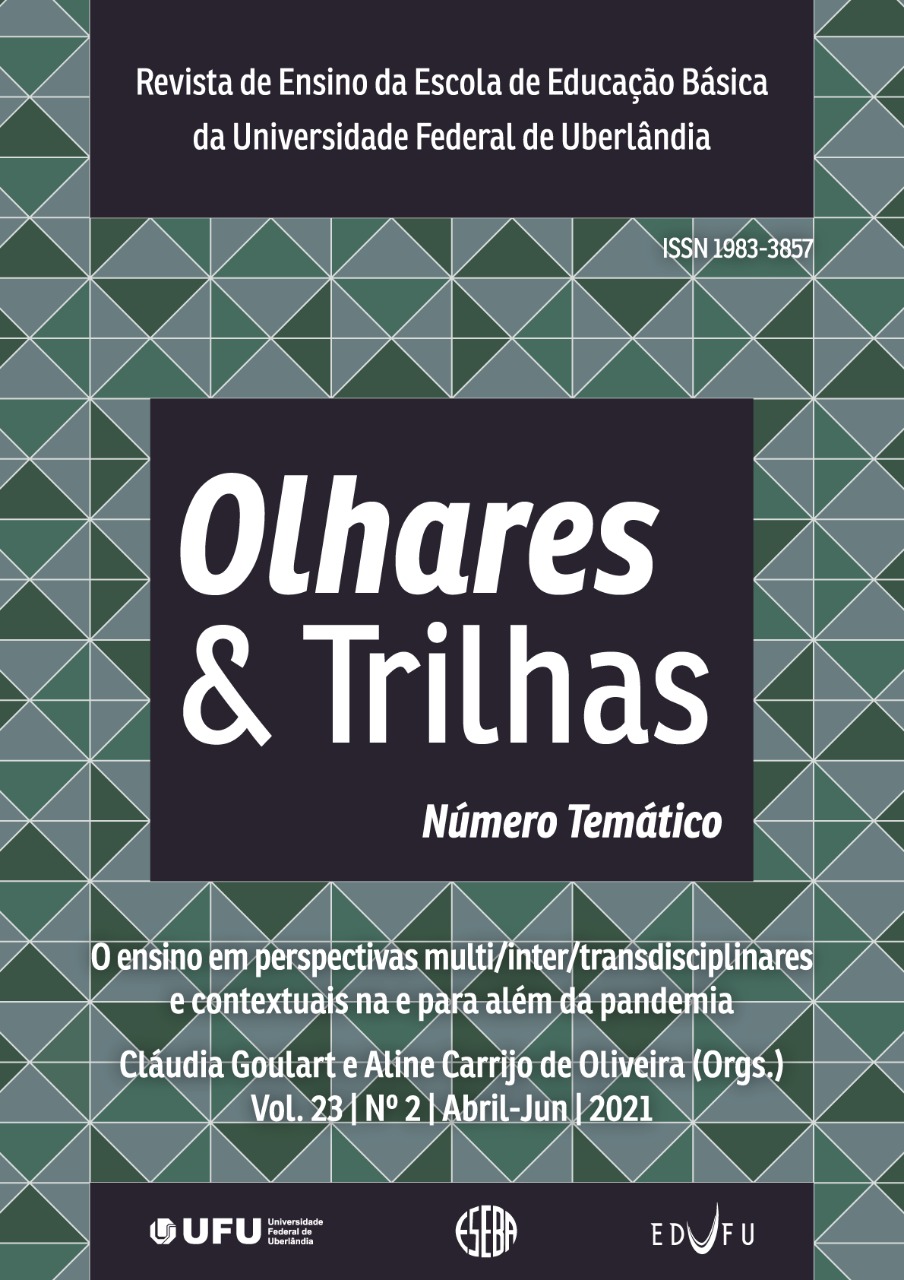The remote teaching of dance at the University in times of the Covid-19 pandemic
others ways of thinking, creating, doing, learning and teaching
DOI:
https://doi.org/10.14393/OT2021v23.n.2.60098Keywords:
Dance, Somatic Education, Remote Education, PandemicAbstract
The present essay is a polyphonic text in which teacher and students of the Dance BA course of the University of Rio de Janeiro present their perceptions and reflections about the experiences lived in a practical discipline taught remotely during the exceptional term. Having as a study theme the modes of execution in dance, the course sought to work on the qualities of the movements and the way they are performed. The methodological strategies used are explained, which sought to embrace the diversity of realities of the students involved and, realizing the socio-political moment of fragility and uncertainties, to bring perspectives of care from the somatic education approach. As a way to make aspects related to teaching-learning visible, understanding that the environment is collectively created by the agents involved, three students are given the voice to reveal their perceptions based on their own experiences. It is considered that, despite the difficulties encountered and the challenging inaugural moment, the action strategies used in the course provided the creation of a space of sensitive experience capable of generating relevant corporal transformations in the participants, adding knowledge beyond the field of dance.
Downloads
References
BERTAZZO, I. Corpo vivo: reeducação do movimento. São Paulo: Edições SESC SP; 2010.
BOFF, L. Saber cuidar: ética do humano – compaixão pela terra. Petrópolis: Vozes, 1999.
BORGES, H. A poética do corpo: uma leitura do trabalho de Angel Vianna. eRevistaPerformatus, v. 2, n. 7, p. 1-16, 2013. Disponível em: http://performatus.com.br/wp-content/uploads/2013/10/AngelVianna_ed7_eRevistaPerformatus.pdf Acesso em 28 março 2021.
CHAMPIGNION, P. Aspectos biomecânicos: cadeias musculares e articulares: método G.D.S.: noções básicas. São Paulo: Summus, 2003.
CSIKSZENTMIHALYI, M. Fluir: a psicologia da experiência Optima, medidas para melhorar a qualidade de vida. Tradução Marta Amado. Lisboa: Relógio D’água Editores, 2002.
FOUCAULT, M. Verdade e subjectividade. Revista de Comunicação e linguagem. Lisboa: edições cosmos, v. 1, n.19, p. 203-223, 1993.
FOUCAULT, M. História da sexualidade 3: O cuidado de si. São Paulo: Paz e Terra; 2014.
FORTIN, S. Educação somática: novo ingrediente da formação prática em dança. In: Cadernos do Gipe-CIT. Salvador: UFBA/PPGAC, n.1, p.40-55, 1999.
GARAUDY, R. Dançar a vida. Rio de Janeiro: Nova Fronteira, 1980.
GIL, J. Movimento Total: O corpo e a dança. Lisboa: Relógio d’Água, 2001.
GODELIVE, D-S. Cadeias Musculares e articulares: o método G.D.S. São Paulo: Summus, 1995.
GUATTARI, F. As Três Ecologias. São Paulo: Papirus, 2012.
HEIDEGGER, M. Ser e Tempo. Petrópolis: Vozes; 1989.
HANNA, T. What is somatics? Journal of Behavioral Optometry, v.2, n.2, p. 31-35, 1991.
LOUPPE, L. A Poética da Dança Contemporânea. Tradução Rita Costa. Lisboa: Orfeu Negro, 2012.
MILLÁS, C. R. G. Corpo-em-fluxo: dança e escalada como práticas de emancipação para o artista da cena. 2019. 243 p. Tese (Doutorado em Artes Cênicas). Programa de Pós-Graduação em Artes Cênicas, Universidade Federal do Estado do Rio de Janeiro, Rio de Janeiro – RJ, 2019.
MILLER, J. A escuta do corpo: sistematização da Técnica Klauss Vianna. São Paulo: Summus, 2007.
RESENDE, C. O que Pode um Corpo? O método Angel Vianna de conscientização do movimento como um instrumento terapêutico. Physis Revista de Saúde Coletiva. Rio de Janeiro: UERJ, v. 18, n.3, p. 563-574, 2008. DOI: https://doi.org/10.1590/S0103-73312008000300011.
SERRES, M. Variações sobre o corpo. Rio de Janeiro: Bertrand Brasil, 2004.
SHUSTERMAN, R. Consciência Corporal. São Paulo: É realizações, 2012.
TEIXEIRA, L. P. A corporeidade e a análise funcional do corpo no movimento dançado em diálogo com outras práticas corporais. Revista Interinstitucional Artes de Educar. Rio de Janeiro: UERJ, v. 5, n.3, p.581-595, set-dez de 2019. DOI: https://doi.org/10.12957/riae.2019.45735
VIANNA, K. A dança. Em colaboração com Marco Antonio de Carvalho. São Paulo: Summus, 2018.

